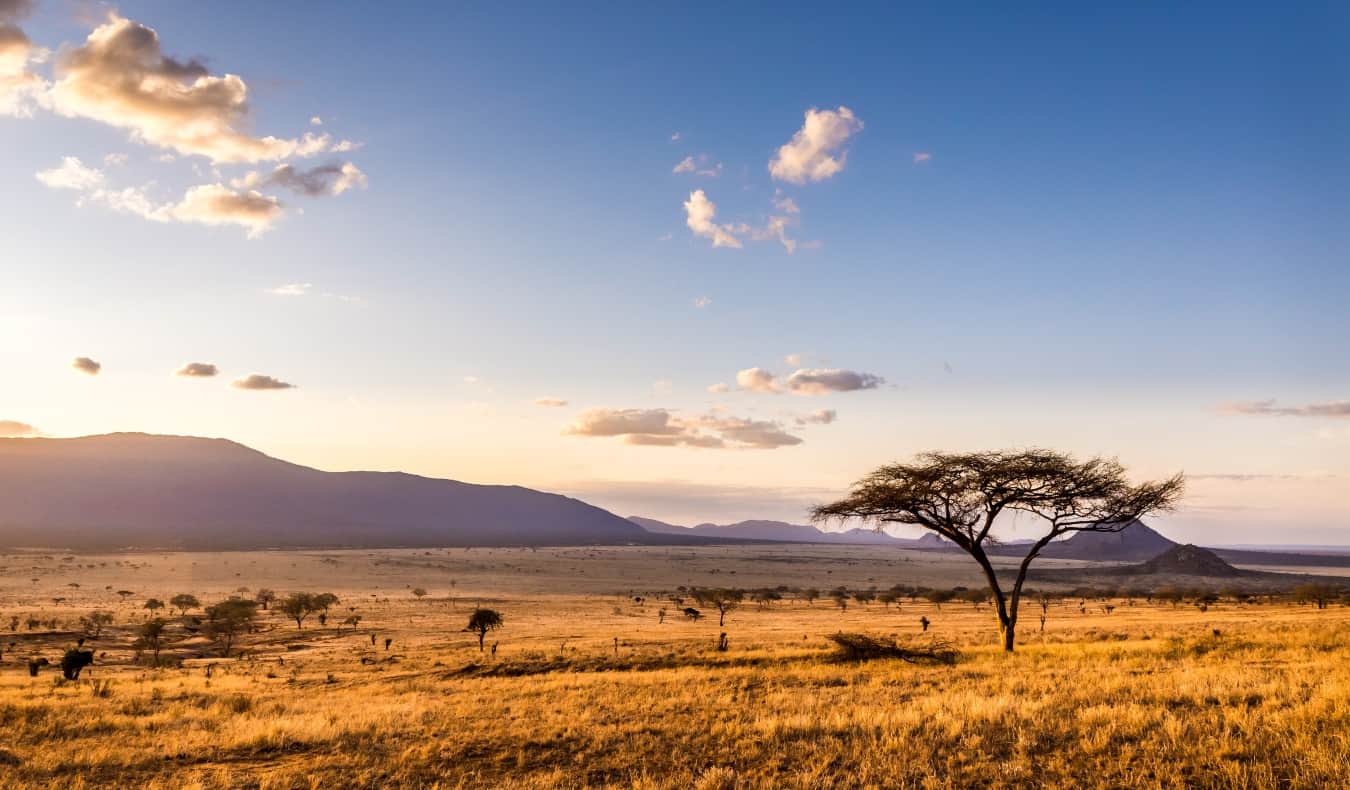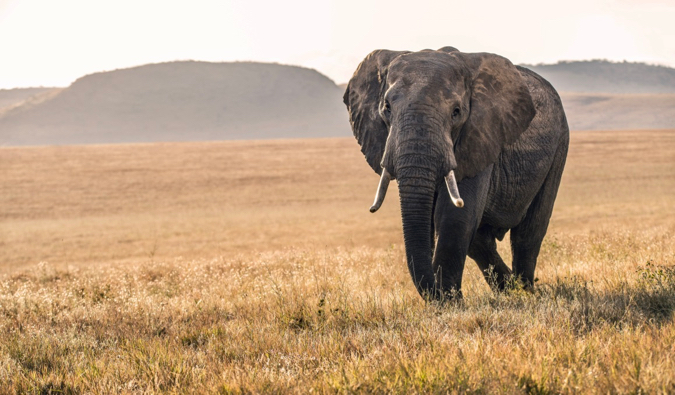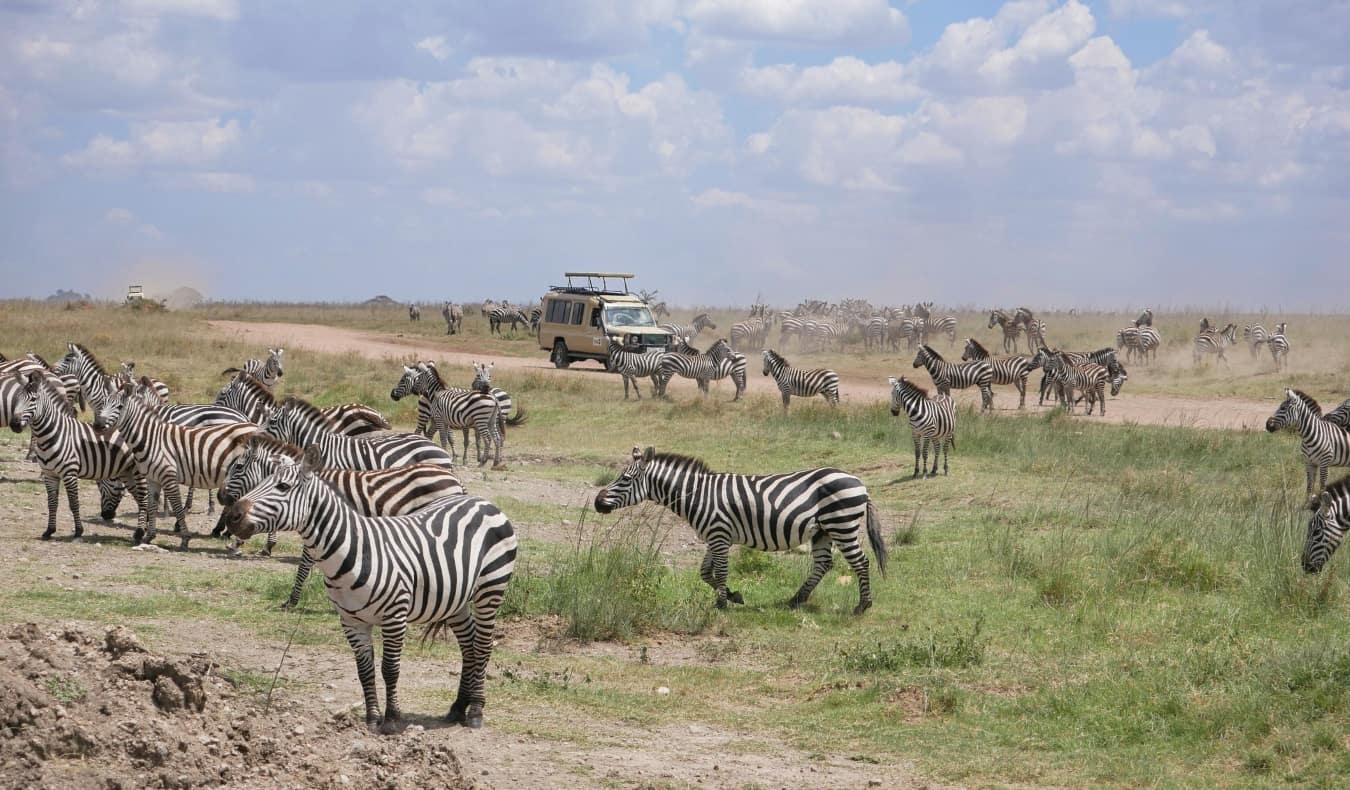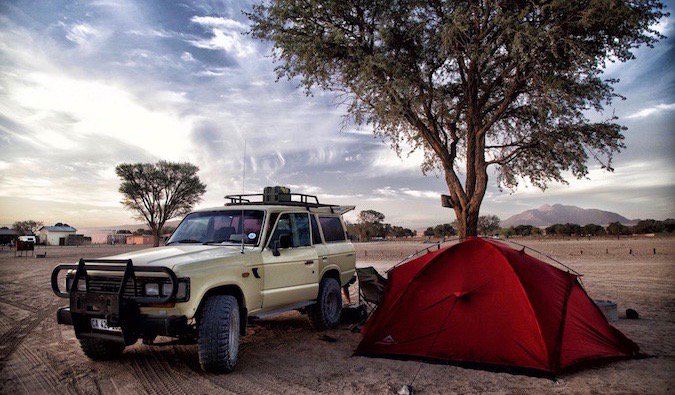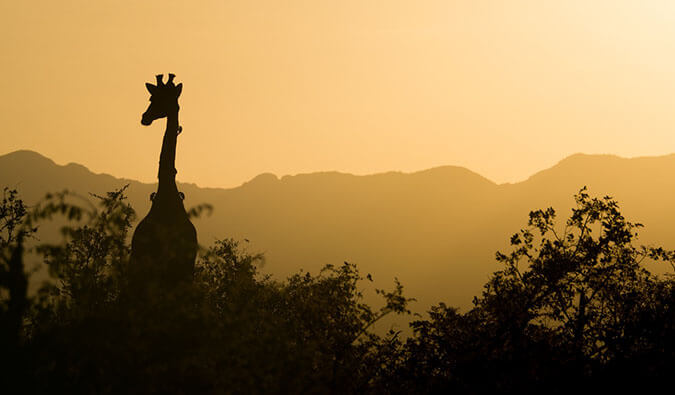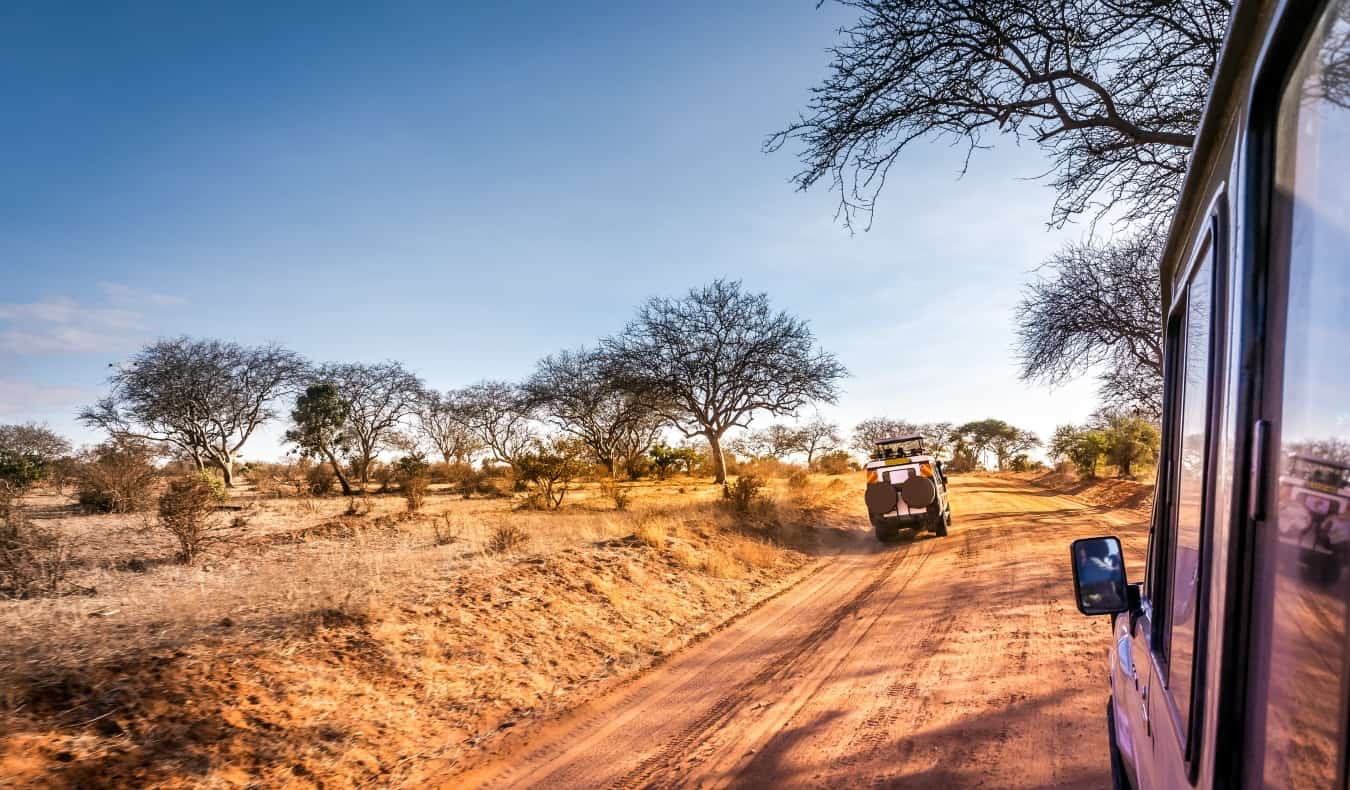
Last Updated: 7/17/23 | July 17th, 2023
Kenya and Tanzania, both great safari options in East Africa, are destinations I have long wanted to visit. And I’m not alone. Many of you have asked about these places too. So, I invited Mark Wiens of Migrationology to share his experience and tips on how to travel around this region, see animals, and not spend a ton of money!
Few activities make it to the top of bucket lists like safaris. It’s an experience sought after by people all around the world, a once in a lifetime chance to come face to face with our planet’s most majestic and beautiful animals.
An African safari is a thrilling chance to see wild animals going about their daily lives in their natural habitat, which is why they’re one of the most popular activities on the continent.
East Africa (specifically Kenya and Tanzania) has a huge variety of national parks that offer adventurous opportunities to see wildlife up close.
But the industry is not normally well suited to long-term travelers on a tight budget. The East African safari generally caters to luxury tourists who want a quick vacation and can pre-book an all-inclusive package trip without thinking too much about the cost.
A lot of research and planning goes into getting a safari fully arranged, deciding what game reserve to visit, and finding transportation and accommodation.
Fortunately, there are several ways to save money on an African safari. In this post, I’ll show you how to plan an amazing safari in East Africa without breaking the bank!
Table of Contents
Package Tours
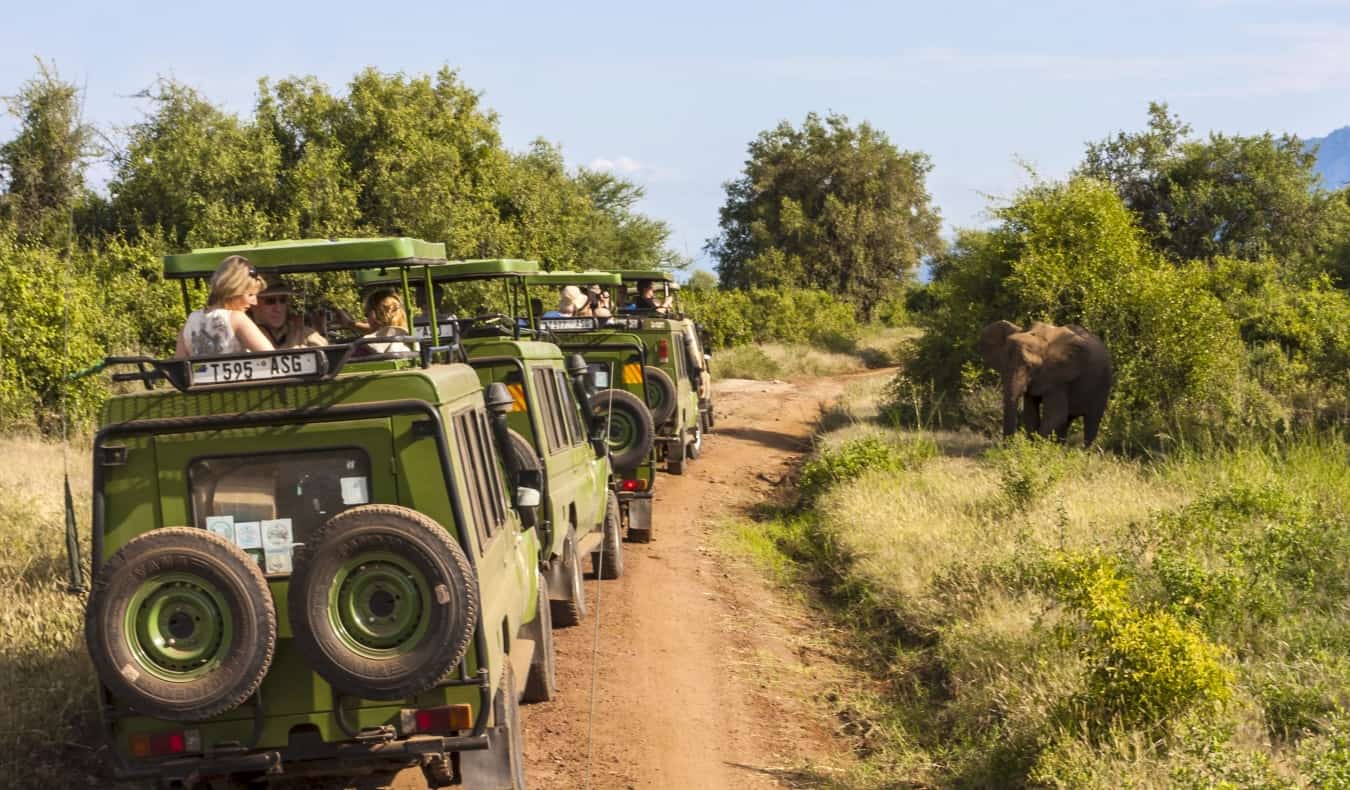
There are countless companies that offer safari packages for tourists who wish to sit back and not do any planning. These safari tours are very convenient and worth the money if you don’t have the time to do research or if you want to avoid potential hassles.
Package deals offer one price and generally cover everything from pickup to drop-off (even from the airport), including food, fees, transportation, and lodging. Be prepared to spend around $300–$500 USD per day for a mid-range package safari. They aren’t cheap!
With a package tour company, you can either join a group with a pre-made itinerary (a great option for solo travelers), or you can customize a safari package with an itinerary to your liking (this option works best if you are already traveling with a group).
Two excellent resources for more information on safari tours are the Kenya Association of Tour Operators, which is better known as KATO, and the Tanzania Association of Tour Operators. Both organizations aim to promote and give credibility to the safari companies that maintain a high level of service and a great value-to-price ratio. You can find a list of companies there.
There’s also a growing number of half- and full-day, and two-day package tours, so if you don’t have the money to splash out on a multi-day safari, you can still have a safari experience. Some options include a full day tour of Nairobi National Park or a two-day camping safari in Serengeti National Park.
Do-It-Yourself Safari
It’s possible to do a safari on your own, but it’s a lot more work. Here’s how you can organize your own safari:
Rent your own vehicle
Nearly all game parks allow you to drive your own vehicle. This opens up opportunities for saving some money, as well as allows for more flexibility in doing exactly what you want. You can rent a vehicle and drive yourself or rent a vehicle with a full-time driver included (this usually costs an extra $30-40 USD per day). A five-seat SUV can be rented for $75–300 per day, depending on the type of vehicle.
The company, for safety reasons, needs a specific itinerary that details where you plan on going, the number of passengers, and the length of time you intend to rent the vehicle.
Use Discover Cars to find the best deals for your rental.
Accommodation
There are many lodges, hotels, and luxury camp options to choose from, the availability and amenities of which vary depending on the park. Hotel rooms need to be booked a few weeks in advance, especially during peak season. Rates start at $125-200 USD per night and go up from there. Booking.com is the best place to find and book accommodations in advance.
If you’re an adventurous traveler who loves to be close to nature and can handle the howls of animals at night, camping is a great budget-friendly option. You don’t need to reserve in advance for public campsites, but permits are necessary if you want to try to stay at a special campsite. These are located in more isolated sections of the park with no facilities, and are reserved for one group at a time (though you may find that these are already booked up by organized safaris). The cost for camping is around $25-60 USD per adult per night depending on the facilities and whether it’s a public or special campsite.
In Kenya, the main national parks that offer camping options are Hell’s Gate National Park, Tsavo East, Mt. Kenya National Park, Lake Nakuru, Amboseli, and Aberdare National Park. Special campsite reservations can be arranged at the Kenya Wildlife Service office in Nairobi before heading out.
In Tanzania, the main national parks with campsites are Arusha National Park, Lake Manyara National Park, Mikumi National Park, Serengeti National Park, Tarangire National Park, and Ruaha National Park. Special campsite reservations can be made at the TANAPA (Tanzania National Parks Authority) head office in Arusha.
Planning Your Safari: Things to Know
National park entrance fees
Fees for national parks are charged by the day. Nairobi National Park (Kenya) costs $35 USD per day, while Mikumi (Tanzania) costs $30 USD per day. These are the less expensive options.
Other more famous parks like Maasai Mara (Kenya), Serengeti (Tanzania), or Ngorongoro Crater (Tanzania), can cost upwards of $70 USD per day, depending on whether it’s high or low season. If you’re driving your own vehicle, there are separate vehicle charges as well, starting at $40 USD per day.
The time of year matters
Dry season (June–October) is usually the best time of the year to see wildlife, but it’s also the most expensive and busiest time of year. You need to decide what works best for your schedule and your money. If you can, consider going on a safari just before high season kicks in.
Good guides go a long way
Your safari guide will attempt to show you the East African Big 5: lions, leopards, elephants, buffaloes, and rhinos. However, there are many other big-ticket animals that are amazing to see, including cheetahs, hyenas, hippos, giraffes, jackals, crocodiles, and scores of antelope and gazelle.
Usually, your driver will double as your guide. It can be hard to find a good guide, but search around for a driver and confirm that he has a cunning eye for spotting wildlife.
To do this, find an experienced driver with an official tour guide license. You can also search KATO and TATO (mentioned above) for recommended guides that are experienced at finding wildlife.
7 Tips for Going on Safari in East Africa
To help you make the most out of your next safari in East Africa, here are some important tips:
1. Charge your camera – While smartphone cameras have come a long way in the realm of photography, they still lack the zoom capabilities you’ll need to get great wildlife shots. Make sure you have a fully-charged camera before heading out for the day, as well as a spare battery and extra SD cards. You don’t want to miss that perfect shot!
2. Bring motion-sickness pills – Bouncing around in a jeep all day can make some people nauseous. If you get car sick easily, prepare accordingly.
3. Find an ethical driver – All too often, safari drivers will try to get too close to the animals, which disturbs them and normalizes contact with humans. Book your safari with an ethical company that is concerned with animal welfare.
4. Buy travel insurance – While the odds of something going wrong are slim, it never hurts to be prepared!
5. Prepare for dust – It can get dusty in your vehicle as you bounce along the dirt roads. Bring sunglasses to cover your eyes and a bandana or scarf for your face.
6. Dress in layers – The mornings on safari can be cool (especially if you’re starting early) so bring a sweater or light jacket.
7. Bring plenty of water – Your guide and/or driver will likely have water and food for you, but bringing extra won’t hurt. Pack a water bottle (ideally with a filter, like Lifestraw, so that when you fill it up you know your water is clean and safe to drink) as well as some snacks, just in case.
African Safari FAQ
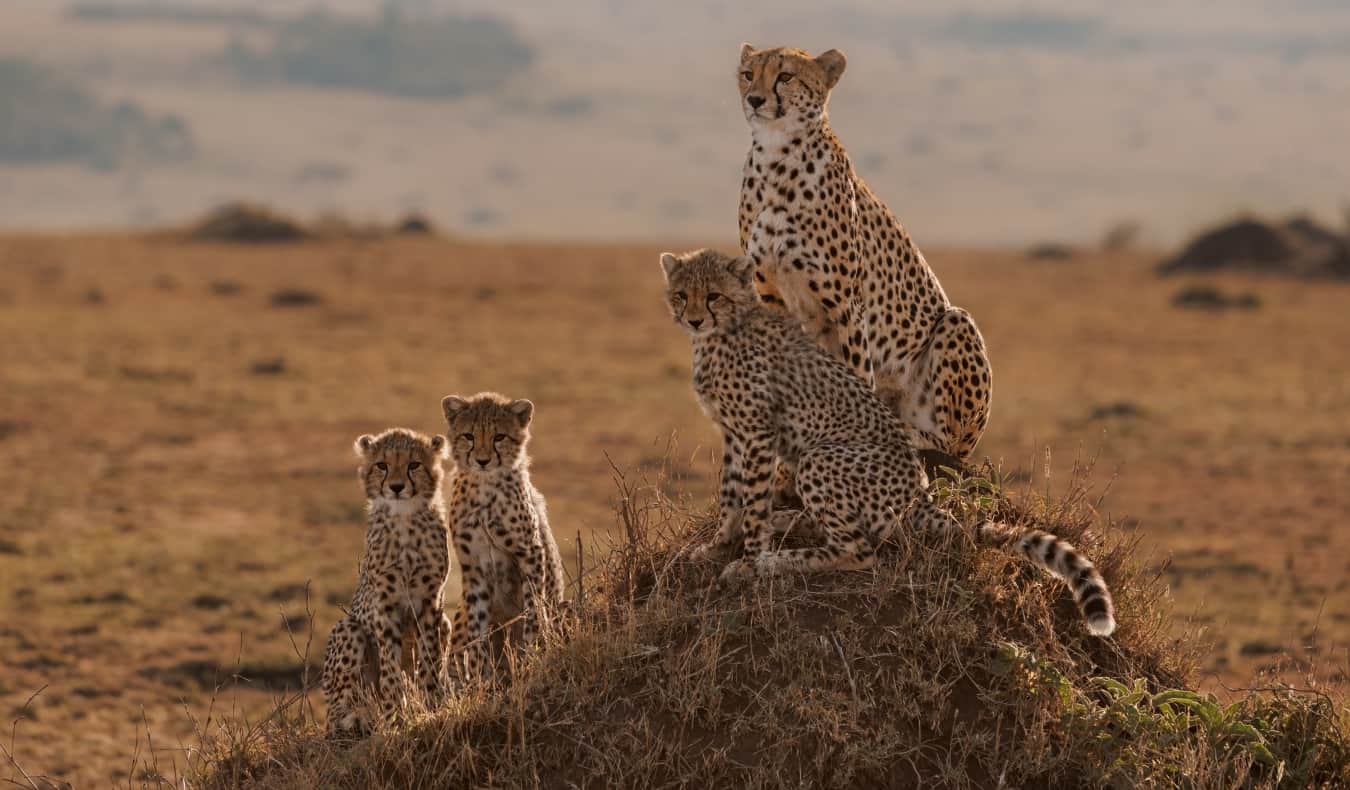
How much do you tip a safari guide?
Generally speaking, you’ll want to tip between $10-15 USD per day for your guide and driver (more if they were excellent, and less if it was just a half-day trip).
Which safari is better Kenya or Tanzania?
Both countries offer amazing experiences, so there is no wrong answer. Kenya is often a little cheaper, but you can find amazing game drives in both countries.
What should I wear on safari in Kenya?
It’s likely going to get warm, so dress for the season. You’ll be in a vehicle most of the day so dress for comfort. Make sure to bring a sweater or light jacket as it can get cool in the mornings when you’re just starting out. Also, bring a hat and sunscreen.
Is Tanzania safe for tourists?
Yep! Tanzania is quite safe. As long as you practice common sense, you won’t run into any trouble.
What injections do you need for Tanzania and Kenya?
It’s recommended that you have shots for hepatitis A, hepatitis B, typhoid, cholera, yellow fever, polio, and MMR (measles, mumps, and rubella). When visiting Tanzania, you’ll be required to show proof of a yellow fever vaccination if you’re arriving from a country with a risk of the disease (so, for example, if you’re visiting Tanzania from Kenya, you’ll want to make sure you have proof of your vaccination).
There’s always something exciting to experience on a safari in East Africa. If you can make the most of your East African safari by doing some pre-planning, you’ll have the adventure of your life!
Yes, a safari isn’t the most budget-friendly activity — but it is a once in a lifetime chance to see some of the most amazing wildlife and landscapes in the world. By following the tips and advice above you’ll be able to make the most out of your next safari in East African — all while saving some money too!
Mark Wiens is an African-raised cultural travel enthusiast and street-food connoisseur who loves to explore the local side of travel. He shares his adventures on Migrationology.
Book Your Trip to Africa: Logistical Tips and Tricks
Book Your Flight
Use Skyscanner to find a cheap flight. They are my favorite search engine because they search websites and airlines around the globe so you always know no stone is left unturned.
Book Your Accommodation
You can book your hostel with Hostelworld as they have the biggest inventory and best deals. If you want to stay somewhere other than a hostel, use Booking.com as they consistently return the cheapest rates for guesthouses and cheap hotels.
Don’t Forget Travel Insurance
Travel insurance will protect you against illness, injury, theft, and cancellations. It’s comprehensive protection in case anything goes wrong. I never go on a trip without it as I’ve had to use it many times in the past. My favorite companies that offer the best service and value are:
- Safety Wing (for everyone below 70)
- Insure My Trip (for those over 70)
- Medjet (for additional evacuation coverage)
Looking for the Best Companies to Save Money With?
Check out my resource page for the best companies to use when you travel. I list all the ones I use to save money when I’m on the road. They will save you money when you travel too.
